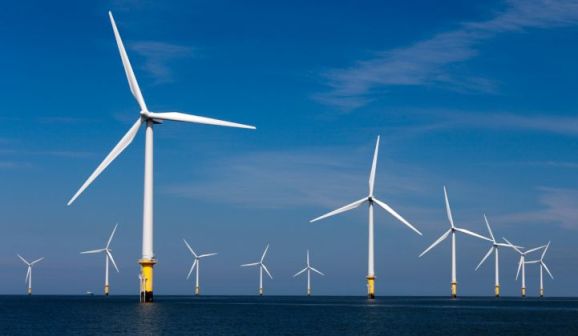A new Special Issue of the Climate Policy Journal focuses on the governance of European climate change efforts. Drawing on the insights, Michael Grubb and Kacper Szulecki argue that a huge opportunity could be grasped in the form of a New Energy Union. The outcome of the UK’s referendum illustrates the need for it to be viewed not as a technocratic venture but an economic and political opportunity.

Energy is the lifeblood of society. It heats our homes, powers our industry and entertainment, and fuels our transport. It became yet another negative punchbag in the UK Referendum campaign, with claims and counterclaims about costs. But there is a simple and very positive story to be told.
Some sixty-five years ago, after the devastation of World War II, the European Coal and Steel Community provided the vision, the coordination, and the investment that fuelled an unparalleled period of growth and stability in Europe. It laid the foundations for what then became the European Communities, the EEC and then the European Union. But ironically the energy sector got left behind.
Now is the time to update the vision. The great strength of that original Community was not to obsess about sovereignty, but to focus on a real, substantial and urgent task that required collective action. At long last, EU countries have initiated an Energy Union. It started from perhaps unexpected quarters, as Poland sought a unified European response to concerns about their excessive dependence on Russian gas. But the solution is not to go back to the dirty fuels of past centuries. Europe’s energy future can be clean, diverse, secure, and interconnected.
The old ways of energy production, emitting 40 billion tonnes of heat-trapping gases every year, are slowly choking our planet. Last year was the hottest on record; the Arctic ice has continued long-term decline in volume, with the lowest ever extent this Spring. Fortunately, the solutions are at our fingertips. Within less than a decade, the cost of solar energy has halved, that of wind has fallen by a third, batteries by 60%, and some technologies for energy efficiency by even more. Crucially, the costs of both electricity system management and long distance transmission have also fallen.
What that means is that we can have radically new energy systems, combining localised generation and storage with larger resources and backup pooled across regions. But there is a catch. The cost reductions to date have been driven by the collective impact of national efforts, including those in the framework of the EU’s commitment to get 20% of its energy from renewables by 2020. Europe is on course to deliver that goal and it has driven the creation of new industries and scale economies.
The next stage will be harder. Going much further requires a more integrated effort with more connected energy systems. The wind does not blow (or cease to) everywhere at the same time across the continent. The biggest and best resources are scattered in different corners of Europe, and the vast swathes of the North Sea, the Baltic and parts of the Mediterranean. The sun’s track from east to west can help solar output to smooth morning and evening peaks, but far more important is the difference between north and south, and across the seasons.
We will need transmission lines to harvest that huge renewable potential. The EU has set a modest 10% interconnection target for national electricity systems to meet, but even that will require some efforts. As well as ensuring security and capacity, coordination between Member States will need to monitor the impact connecting different national systems may have on overall carbon dioxide emissions. Joint efforts need not end at EU borders; neighbouring regions such as North Africa and the Balkans could also be invited to the trans-continental effort.
We will need storage of both electricity and gas. Gas is much cleaner than coal, and we can use our gas infrastructure and storage further in the future as we move towards ‘greener gas’ – for example producing hydrogen from surplus wind and solar output and injecting it into gas grids.
Our gas systems complement each other: central European dependence on Russia is matched by British dependence on the Middle East, so conjoined, each can help the other. As our own gas reserves decline, the North Sea also offers wind, waves and capacity to store both gas and perhaps carbon dioxide, as well as connections to Scandinavian hydro-electricity storage.

The economic value of the industries will be immense. An investment programme along these lines could offer a real and significant contribution to European economic recovery. A UK House of Lords enquiry concurred that channelling badly-needed investment into such real assets, which deliver unambiguous economic returns well above prevalent interest rates, would enhance future economic productivity as well as provide short-term economic stimulus. And the savings arising from fully integrated approaches in energy by 2030 have been estimated at up to €50-80bn/yr by 2030 – hundreds of Euros per household. But all that needs an integrated approach, and investor confidence grounded in a clear European vision, strategy and collaboration.
So there is one big catch: politics, most fervently on display in the UK Referendum. Cost-benefit analyses with abstract ‘social welfare’ end up subordinate when political considerations take centre stage. Furthermore, different varieties of capitalism across Europe make the calculus of cost and the distribution of benefits differ between markets. But a coordinated effort on a Europe-wide scale can be made beneficial for everyone.
The UK could still aspire to play a great role in building this future. It has leading energy expertise, superb wind resources, and is well on our way to doubling its electricity interconnections with the continent, to benefit from cheaper prices on the continent through cable which have proven to be amongst the most reliable sources of power (Figure 2), helping to ‘keep the lights on’ in recent winters of tight UK supply. Though it would clearly be easier to provide this within the EU, UK engagement will remain mutually beneficial to the effort, even if a UK departure may preclude it from some of the benefits. Norway’s example shows that however complicated a country’s relationship with the EU may be, energy cooperation can offer pragmatic solutions for mutual benefit.
The challenges then are governance to provide confidence and clarity, with a strategy to ensure that European citizens benefit from the transformation and investment at all levels, from the local to the continental – and know it. That is what, in principle, the Energy Union can deliver; and what effective governance of Europe’s energy transition most needs to provide.
Source: Ofgem
This post draws upon a commentary by Michael Grubb published in the Guardian and Euractiv. In addition to papers in the CP Journal Special Issue it draws upon papers for the UCL European Institute, Brexit and Energy: cost, security and climate policy implications , and UCL Institute for Sustainable Resource on Brexit, and The costs and benefits of EU energy and climate policy.
About the Authors
Michael Grubb is Professor of International Energy and Climate Change Policy at the Institute for Sustainable Resources of University College London (UCL), and previously was a Senior Advisor to the UK Energy Regulator Ofgem.
Kacper Szulecki is Assistant Professor at the Department of Political Science, University of Oslo.


